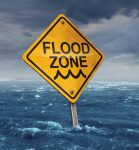LUST Closure—Risk-Based Decision Making Basics
Risk-Based Decision Making Basics RBDM is used more and more to facilitate effective and appropriate characterization and cleanup of UST releases. According to the Environmental Protection Agency (EPA), RBDM “is a process that utilizes risk and exposure assessment methodology to help UST implementing agencies make determinations about the extent and urgency of corrective action and […]









